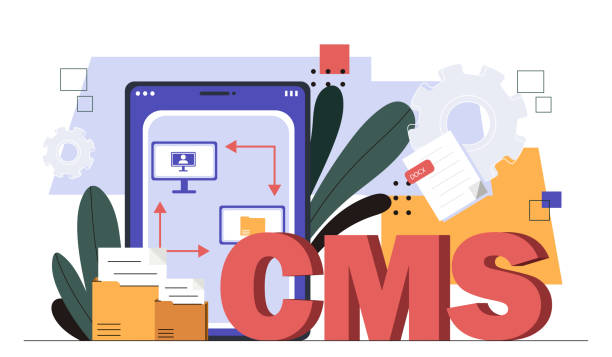Level Up Your Web Development Game: A Guide to Essential Programming Languages

The landscape of web development is a constantly churning sea of innovation, architectures, and competing methodologies. What was cutting-edge five years ago is baseline knowledge today. For developers aiming to transition from competence to mastery, a profound understanding of the core programming languages that power the internet—both on the client-side and the server-side—is non-negotiable.
This comprehensive guide delves into the essential languages required to build modern, scalable, and robust web applications, dissecting their unique roles, architectural principles, and the specific code language concepts that define their utility.
I. The Unavoidable Trinity: Mastering the Client-Side Foundation
Any discussion of web development must begin with the three languages that are executed directly by the user’s browser. These form the fundamental blueprint for every website and web application accessible today.
1. HTML5: The Structural Skeleton
While not a programming language in the executable sense, HyperText Markup Language (HTML) is the core syntax that dictates the structure and semantic meaning of content. Modern development leans heavily on Semantic HTML5 elements (like <article>, <section>, and <nav>) to improve accessibility (A11Y) and Search Engine Optimization (SEO).
Code Language Concept: Semantic Structuring
Using a <div> for everything is outdated. Semantic HTML provides clear meaning, which is critical for screen readers and search engine crawlers.
<header>
<h1>Site Title</h1>
<nav aria-label="Main navigation">
<ul>
<li><a href="#">Home</a></li>
<li><a href="#">About</a></li>
</ul>
</nav>
</header>
<main>
<article>
<h2>Blog Post Title</h2>
<p>Content goes here...</p>
</article>
</main>
2. CSS3: The Presentation Layer
Cascading Style Sheets (CSS) is responsible for the visual presentation, layout, and responsiveness of HTML content. Mastery of CSS is defined less by remembering properties and more by understanding modern layout mechanisms and pre-processors.
Key Architectural Concepts:
- Flexbox and Grid: These are the indispensable layout models for modern responsiveness. CSS Grid excels at two-dimensional layouts (overall page structure), while Flexbox is perfect for one-dimensional alignment (component spacing).
- CSS Pre-processors (Sass/LESS): These extend CSS with programming features, allowing for variables, nesting, mixins, and functions, dramatically improving code maintainability and modularity.
3. JavaScript (JS): The Engine of Interactivity
JavaScript is unquestionably the most critical language in the development stack. It is the only language natively executed by all major web browsers, governing everything from complex user interfaces to basic form validation.
“JavaScript is the duct tape of the internet. Without it, everything falls apart, and with it, you can build almost anything.” — A modern adaptation of a common industry analogy.
The Modern JS Ecosystem (ES6+):
The transition to ECMAScript 2015 (ES6) introduced crucial features that define modern JS development:
- Asynchronous Programming: Handling operations that do not block the main thread (like fetching data from a server) is paramount. This relies heavily on Promises and the
async/awaitsyntax, providing clean, readable management of concurrency. - Module System (
import/export): Allows developers to break code into reusable, encapsulated components. - Arrow Functions and Class Syntax: Improved syntax for defining functions and implementing Object-Oriented Programming (OOP) patterns.
The Rise of Frameworks and Libraries:
JavaScript’s dominance is further cemented by its framework ecosystem. Expertise in one of the “Big Three” is often demanded:
- React (Library): Maintained by Meta, focused on building composable User Interface (UI) components using a declarative approach and the Virtual DOM for performance optimization.
- Angular (Framework): A comprehensive, opinionated framework maintained by Google, optimized for large-scale enterprise applications.
- Vue.js (Framework): Known for its gentle learning curve and flexibility, often chosen for progressively enhanced applications.
II. The Powerhouse: Essential Backend Programming Languages
While the frontend dictates what the user sees, the backend manages the core business logic, database interactions, authentication, and security. Choosing a backend language often depends on the project’s scale, performance requirements, and existing infrastructure.
1. JavaScript (Node.js): Full-Stack Unification
The massive breakthrough for JavaScript was its escape from the browser via Node.js. Node.js runs the open-source V8 engine (developed initially for Google Chrome) on the server, allowing developers to use a single language across the entire application stack.
Key Architectural Concept: Non-Blocking I/O
Node.js is defined by its event-driven, non-blocking I/O model. Unlike traditional server models that create a new thread for every client request, Node.js uses a single-threaded Event Loop. When a lengthy operation (like a database query or file access) is initiated, Node.js registers a callback and immediately moves on to process the next request, ensuring high concurrency and throughput.
Code Language Concept: Asynchronous Handling
// Function demonstrating non-blocking data fetching in Node.js/modern JS
async function fetchUserData(userId) {
try {
// 'await' pauses execution until the Promise resolves, but does not block the Event Loop
const response = await fetch(`api/users/${userId}`);
if (!response.ok) {
throw new Error(`HTTP error! status: ${response.status}`);
}
const data = await response.json();
return data;
} catch (error) {
console.error("Fetch failed:", error);
}
}
2. Python: Simplicity, Versatility, and Intelligence
Python’s strength lies in its exceptional readability and vast standard library, making it the dominant choice not only for web development but also for data science, machine learning, and automation. This synergy means Python is ideal for applications requiring integration with intelligent features.
Key Frameworks and Use Cases:
- Django: The “batteries-included” framework, offering an ORM (Object-Relational Mapper), routing, templating, and administrative interface out of the box, ideal for rapid, complex application development.
- Flask: A lightweight micro-framework, perfect for smaller APIs, services, or developers who prefer maximum control over component choice.
Code Language Concept: Readability (PEP 8)
Python enforces clean code through conventions (PEP 8), prioritizing clarity. Features like list comprehensions illustrate this elegance:
# Traditional loop to square numbers
squared_list_traditional = []
for i in range(10):
squared_list_traditional.append(i * i)
# Python List Comprehension (more concise and idiomatic)
squared_list_pythonic = [i * i for i in range(10)]
3. Java: The Enterprise Standard for Robustness
Java, running on the venerable Java Virtual Machine (JVM), remains the heavyweight champion for large-scale, high-traffic enterprise systems. Its core values are stability, scalability, and platform independence (“Write once, run anywhere”).
Key Architectural Concepts:
- Static Typing: Variables must be explicitly declared with a type, catching errors at compile time rather than runtime, crucial for massive code bases.
- Robust Concurrency: Java offers sophisticated built-in threading models and synchronization primitives, essential for managing highly concurrent operations without data corruption.
- Spring/Spring Boot: The dominant modern Java framework, simplifying the setup of enterprise applications, especially microservices, through convention over configuration.
“The true measure of a language is not how cleverly it allows you to express things, but how resilient it makes your systems.” — A paraphrase reflecting Java’s focus on long-term maintainability and resilience.
4. PHP: The Workhorse of CMS and Speed
Often overlooked by newcomers, PHP powers roughly 78% of all websites, largely due to the dominance of WordPress, Drupal, and other Content Management Systems (CMS). Modern PHP (versions 7 and 8) is a significantly faster and more structured language than its predecessors.
Key Architectural Concepts:
- Shared-Nothing Architecture: PHP processes usually execute completely within one request cycle, making scaling horizontally straightforward.
- Frameworks (Laravel/Symfony): The widespread adoption of MVC (Model-View-Controller) frameworks like Laravel has brought sophisticated structure, testing capabilities, and dependency injection to the PHP ecosystem, making it suitable for complex, modern applications.
III. Specialized Toolkits: Data and Typing
As applications grow in complexity, two specialized areas become mandatory for professional development: data management and type safety.
1. SQL (Structured Query Language): The Data Communicator
While not a general-purpose programming language, SQL is the declarative language used to manage and query relational databases (PostgreSQL, MySQL, SQL Server). Mastery of SQL is arguably as important as mastery of any backend language, as every non-trivial application relies on efficient data retrieval.
Essential Concepts:
- ACID Properties: Understanding Atomicity, Consistency, Isolation, and Durability is crucial for maintaining transactional integrity.
- Joins: The ability to combine data from multiple tables using
INNER JOIN,LEFT JOIN, etc., is fundamental to relational efficiency. - Indexing and Query Optimization: Writing efficient queries is often the key to scaling an application.
The NoSQL Alternatives:
For applications requiring extreme flexibility or high data volume with eventual consistency, NoSQL databases (like MongoDB, Cassandra, Redis) are used. Developers must understand the trade-offs regarding the CAP theorem (Consistency, Availability, Partition Tolerance).
2. TypeScript: Static Typing for Scalable JavaScript
TypeScript (TS) is an open-source language developed by Microsoft that acts as a superset of JavaScript. It compiles down to plain JavaScript but adds static typing. This allows developers to define contracts for data structures, methods, and variables before the code is executed.
Code Language Concept: The Power of Interfaces
TypeScript dramatically improves developer experience in large teams by catching errors related to data structure mismatches during compilation.
// Define a shape (interface) for the User object
interface User {
id: number;
username: string;
email: string; // Must be a string
isActive: boolean;
}
// Function requires the input to adhere to the User interface
function displayUser(user: User) {
// If we try to access 'user.age', the compiler throws an error BEFORE runtime.
console.log(`User ID: ${user.id}, Status: ${user.isActive ? 'Active' : 'Inactive'}`);
}
// This is valid
const validUser: User = { id: 101, username: "dev_pro", email: "a@b.com", isActive: true };
displayUser(validUser);
// This would cause a compile-time error in TypeScript:
// const invalidUser: User = { id: "101", username: "bad_data", isActive: true };
The adoption of TypeScript across major frameworks (Angular uses it by default, React strongly encourages it) makes it an essential skill for professionals building large-scale, enterprise-grade frontend or Node.js applications.
IV. Beyond Syntax: The Meta-Skills of Development
While specific languages are critical, leveling up often means mastering the surrounding tools and concepts that ensure code quality, collaboration, and deployment.
1. Version Control (Git)
Regardless of the language stack, Git is the universal standard for managing code history, enabling collaboration, and handling complex branching strategies. Professional proficiency extends beyond basic commits and pushes; it includes rebasing, merging strategies (fast-forward vs. no-fast-forward), and handling merge conflicts gracefully.
2. Deployment and Containerization
Modern web applications are rarely deployed directly onto a server. Understanding how your code translates into a deployed system necessitates familiarity with:
- Platform as a Service (PaaS): Systems like Heroku or Vercel simplify deployment.
- Infrastructure as Code (IaC): Tools like Terraform or CloudFormation manage cloud resources programmatically.
- Containerization (Docker): Packaging an application and all its dependencies into an immutable image ensures consistency between the development, testing, and production environments.
3. Testing Paradigms
A professional developer writes tests. Depending on the language and framework, expertise must cover:
- Unit Tests: Verifying the smallest testable parts of an application (e.g., Junit for Java, Jest for JavaScript, Pytest for Python).
- Integration Tests: Ensuring that different components (like the application and the database) work together correctly.
- End-to-End (E2E) Tests: Simulating real user scenarios in a browser (e.g., using Cypress or Playwright).
V. Strategic Learning and Conclusion
The sheer volume of essential languages and frameworks can feel overwhelming. The professional path is not about shallow knowledge of ten languages but deep command of one full stack.
A common, highly marketable professional stack might look like this:
| Layer | Primary Language | Framework/Tool | Rationale |
|---|---|---|---|
| Client | JavaScript/TypeScript | React/Next.js | High performance, component-based UI. |
| Server | Node.js or Python | Express.js or Django | Full-stack JS consistency or robust Python backend logic. |
| Data | SQL | PostgreSQL | Reliable, transactional data management. |
| Meta | Git, Docker | CI/CD Pipelines | Standardizing deployment and collaboration. |
“The coding interview today is not about knowing every function; it’s about demonstrating your ability to learn quickly and adapt core programming principles across different syntaxes.”
To truly “level up” your web development game, start with deep foundational knowledge of HTML, CSS, and vanilla JavaScript. From there, strategically choose one powerful backend language (Python or Node.js being excellent modern choices) and commit to mastering its primary framework, database connectivity (SQL), and advanced concepts like asynchronous operations, memory management, and typing systems.
The web waits for no one. Start coding, build robust systems, and continually refine your understanding of the underlying architectures that make the modern internet possible.





